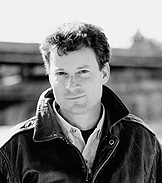

THE UNIVERSITY OF WASHINGTON ALUMNI MAGAZINE |
Giovanni Costigan
He rode a bicycle to campus most days, even as he aged well past mandatory retirement years. He walked with a stoop, and had a curled index finger which he raised to good effect. Like all who love the Irish, or have some of the Irish in them, he had a twinkle in his eye -- the real thing. Costigan was angry at the Vietnam War, and the lingering nuclear buildup of the Cold War. But his true passion was Ireland, and how the island had suffered such lasting torture at the hands of the English. He was never bitter. For he also loved Ireland for its better half-its poets, narrative voices, mythology and theater. I am Irish-American, removed by three generations from the old sod. It was only through Dr. Costigan's classes that I came to feel a larger sense of heritage. His classes were always packed, even on days when the Quad was lit with spring and promise. Afterwards, there was always a line of people waiting to talk with him. Class was never defined by the boundary of 50 minutes. He would read from Yeats-"Cast a cold eye on life, On death Horseman Pass by"-and then he would recount some obscure detail of the Famine, the Easter Rebellion, the Troubles. There are many tributes you can pay him. As a teacher, the best, perhaps, is this: When the bell rang, his class always ended too soon.-Timothy Egan, '81  Timothy Egan is a reporter for the New
York Times and author of two nonfiction books about western America,
The
Good Rain and the recently published Lasso
the Wind: Away to the New West. Timothy Egan is a reporter for the New
York Times and author of two nonfiction books about western America,
The
Good Rain and the recently published Lasso
the Wind: Away to the New West.
Photo © 1999 Marek Zaranski |
|
|
|
Home / Current Issue / Archives / Talk Back / Advertising / Columns FAQ / Alumni Website / Search